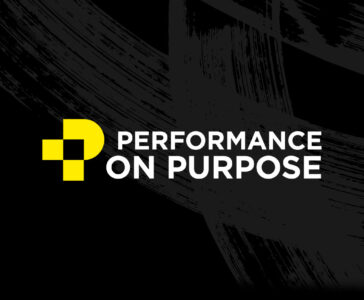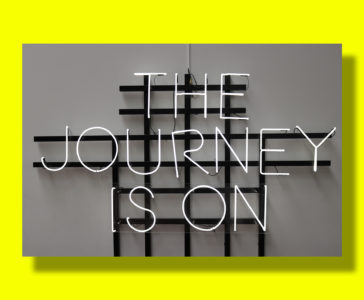Every day in our work at Fathom, we see how a clearly communicated sense of Purpose drives extraordinary results, both with customers and employees. This month, I’m featuring a company and a technology many of us use nearly every day and may take for granted. However, when you take a minute to appreciate the human connections their technology has enabled in recent years, it’s clear they’ve made a big difference in millions of lives.
This month’s edition of “Performance on Purpose” is dedicated to Zoom; a company whose sense of Purpose is palpable in their products as well as in their corporate culture.
Who is Zoom?
Like many, before the COVID-19 pandemic, I had never used Zoom. But as the economy shut down and many of us had to instantly adapt to working from home in March of 2020, Zoom’s online video conferencing capabilities became a lifesaver for business and beyond. During that March alone, Zoom’s daily users grew explosively from 10 million to 300 million.
Beyond business conversations, it’s easy to forget how their technology became a critical part of some of the most meaningful communications anyone was having during the height of the pandemic. Many used Zoom to say their final goodbyes to loved ones quarantined in the hospital, to attend funerals and weddings, to celebrate birthdays and holidays (my iPad was stationed on our kitchen counter facing our dining room table as we prepared a meal together – see below), and so much more in 2020 and into 2021.

In 2011, Zoom was founded by Eric Yuan and a team that broke away from Cisco Webex, after their internal pitch to create a mobile-friendly video system was turned down. “I firmly believed I could develop a platform that would make customers happy,” Yuan said. He leaped to create a video communications tool that would, above all else, delight customers. From 2011 – 2019, they built out their platform and phone functionality, and had a robust system built when COVID hit.
Yuan shared, “From the moment we founded Zoom, our main focus has been to provide a cloud video communications solution that would make customers happy. That focus has continued to guide all our innovations, partnerships, and other initiatives. The fantastic growth we’ve experienced and the many industry accolades we’ve received can all be attributed to having satisfied customers that enjoy using our platform.”
Built on Human Connection
What was clear from the start was the people-centric commitment of Zoom. When talking about their founding, their website shares, “Zoom technology puts people at the center, enabling meaningful connections, facilitating modern collaboration, and driving human innovation….”
From that beginning, Zoom has been very clear about what they stand for. Their Mission is “One platform delivering limitless human connection” and the Promise that drives their corporate culture is “We deliver happiness.” In fact, Zoom is so clear about what they stand for that they may be the only company I’ve ever seen that has only one core value – Care.

Purpose in Action
With connecting people so central to its identity, it’s no wonder Zoom quickly deployed massive resources to create a free solution for schools and remote learning when COVID-19 hit. In fact, by September of 2020, more than 100,000 schools in 25 countries were using the Zoom platform for academic purposes.
Not surprisingly, Zoom’s internal corporate culture also focuses a great deal on these ideals. Zoom’s leaders “reiterate the company’s core values at bi-weekly all-hands meetings and encourage employees to share examples of how the company’s work affects users’ daily lives,” Roxana Shirkhoda, the company’s head of social impact shared in a recent INC article. The mere presence of a “head of social impact” role speaks volumes about Zoom’s commitment to embodying their purpose.
Somewhat paradoxically, as one of the technologies that made work-from-home possible for so many, Zoom is in the news these days for the challenges they’re having with insisting employees work in the office a few days per week. Based on its commitment to “delivering happiness” and empathizing with customers, Zoom’s leaders felt that it was critical for their employees to experience hybrid and in-office work first-hand. Like many other companies, this is generating friction with employees who’ve really grown accustomed to working from home.
My Customer Experience
Since March of 2020, I’ve been a daily user of Zoom. Over the last handful of years, I’ve used Teams, Skype, GoToMeeting, GoogleMeet and many others, but have found that Zoom is the easiest and most intuitive to use.
Through the pandemic, Fathom had to quickly pivot several of our key services that hinged on in-person workshops with white boards and piles of post-it notes to a video conference setting. It was remarkable how quickly and seamlessly this transition occurred. In fact, we found that we often got broader participation on Zoom calls than we had at in-person sessions. We also quickly embraced Zoom’s break-out room technology to encourage smaller group discussions within larger group events, creating more dialog and broader input.

We’ve also been able to serve customers with broader geography and to continue to feel connected without so much travel. We currently rely on Zoom to work with our clients in Las Vegas, Florida, Texas and more. While in-person meetings are key to building connection, our Zoom meetings sustain the relationships much more effectively for the months and sometimes years between in-person meetings.
Beyond the Benchmark Results
Clearly, Zoom’s focus on human connection and happiness delivers a strong customer experience, but how does that translate into results?
Here are some great examples of the results that Zoom’s sense of Purpose has helped it achieve:
- They are ranked #1 in customer happiness and have 57% marketshare in online video conferencing compared to 25 % for Teams and 1% for Skype (ouch!)
- They’re regularly named a best place to work and during the pandemic year of 2020, they were named #1 by CNBC
- They were ranked as #3 among all global brands on the 2022 Purpose Power Index which measures how consumers think and feel about leaders like Tom’s Shoes, Toyota and hundreds more
- They’ve grown to $4.5 Billion in annual revenue, with nearly $1.4 B in profit and the stock has a market value of over $20 Billion
Perhaps best of all, their product is so ubiquitous that it has become short-hand for their whole industry– “let’s Zoom” is now very much like Kleenex is to tissues and Xerox was to photo copying.
Key Takeaways for Any Organization
While Zoom has more than 8,000 employees and operates around the globe, the way they translate their Purpose into performance is something organizations of any size can learn from and apply.
This is the work that Fathom takes on every day with the closely held businesses and nonprofits we serve. Here are some key ideas any organization can apply:
- Connect your work and employees to the human impact of what they do every day. In Zoom’s case, they reinforce how their products empower human connection and creativity at every opportunity.
- Embed your Purpose into how you recruit, train and retain talented employees.
- Leverage your product or unique capabilities to respond to a need, as Zoom did with educators and students through the COVID crisis.
How can your business learn from the example of Zoom?
Want more from Fathom?
Sign up to receive updates about our articles.



